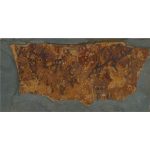Unveiling the Beauty of Cultured Sandstone A Comprehensive Guide to its Origins Characteristics and Applications

Introduction
Sandstone has been a popular building material for centuries due to its natural beauty, durability, and versatility. However, traditional sandstone extraction and processing can have negative environmental impacts and high costs. In recent years, a sustainable and cost-effective alternative known as cultured sandstone has gained popularity in the construction industry. Cultured sandstone offers all the aesthetic appeal of natural sandstone while minimizing environmental impact and reducing costs. This article will explore the origins, characteristics, and applications of cultured sandstone in detail, shedding light on this innovative building material.
Origins of Cultured Sandstone

Cultured sandstone, also known as manufactured or artificial sandstone, is a man-made material designed to replicate the look and feel of natural sandstone. The production process involves combining natural aggregates, such as sand, with cement, pigments, and other additives to create a material that closely resembles natural sandstone in appearance and texture. Cultured sandstone is typically cast into molds to create various shapes, sizes, and textures, making it a versatile building material for a wide range of applications.
The origins of cultured sandstone can be traced back to the growing demand for sustainable building materials that minimize environmental impact and reduce costs. Traditional sandstone extraction involves quarrying natural stone from the earth, which can lead to deforestation, habitat destruction, and other environmental issues. By using recycled materials and reducing energy consumption during production, cultured sandstone offers a more eco-friendly alternative to natural sandstone.
Characteristics of Cultured Sandstone
Cultured sandstone shares many characteristics with natural sandstone, including its distinctive texture, color variations, and durability. However, there are I thought about this between the two materials that make cultured sandstone a unique and versatile building material.
1. Appearance: Cultured sandstone is designed to mimic the natural beauty of real sandstone, with a range of colors and textures available to suit different design preferences. From earthy tones to vibrant hues, cultured sandstone offers endless possibilities for creating visually stunning architectural features.
2. Texture: Cultured sandstone can be manufactured with a variety of textures, including smooth, rough, or natural stone finishes. This versatility allows for the creation of intricate designs and patterns that would be difficult or impossible to achieve with natural sandstone.
3. Durability: Cultured sandstone is a durable material that is resistant to weathering, fading, and staining. It is also less prone to cracking and chipping compared to natural sandstone, making it a low-maintenance option for both interior and exterior applications.
4. Weight: Cultured sandstone is generally lighter in weight than natural sandstone, making it easier to handle and install. This can result in cost savings during transportation and installation, especially for large-scale projects.
5. Cost: Cultured sandstone is typically more affordable than natural sandstone due to lower production costs and the use of recycled materials. This cost-effectiveness makes cultured sandstone an attractive option for budget-conscious builders and developers.
Applications of Cultured Sandstone
Cultured sandstone is a versatile building material that can be used in a wide range of applications, from architectural facades to interior design elements. Its aesthetic appeal, durability, and cost-effectiveness make it a popular choice for both residential and commercial projects. Some common applications of cultured sandstone include:
1. Cladding: Cultured sandstone is often used as a cladding material for building facades, walls, and columns. Its natural look and texture enhance the visual appeal of a structure while providing protection from the elements.
2. Flooring: Cultured sandstone can be used to create beautiful and durable flooring solutions for both indoor and outdoor spaces. Its slip-resistant surface and low maintenance requirements make it a practical choice for high-traffic areas.
3. Countertops: Cultured sandstone countertops offer a luxurious and sophisticated look for kitchens, bathrooms, and other living spaces. The material is resistant to heat, stains, and scratches, making it an ideal choice for busy households.
4. Decorative Elements: Cultured sandstone can be molded into various shapes and sizes to create decorative elements such as moldings, cornices, and medallions. These architectural details add a touch of elegance and character to any interior or exterior design.
5. Landscaping: Cultured sandstone is often used in landscaping projects to create pathways, retaining walls, and garden features. Its natural appearance blends seamlessly with outdoor surroundings, enhancing the overall aesthetic of the landscape.
Conclusion
Cultured sandstone is a versatile and sustainable building material that offers a cost-effective alternative to natural sandstone. Its unique characteristics, including its appearance, texture, durability, weight, and cost, make it an attractive choice for a wide range of architectural and design applications. Whether used for cladding, flooring, countertops, decorative elements, or landscaping, cultured sandstone provides a durable and aesthetically pleasing solution for both residential and commercial projects. As the demand for eco-friendly and affordable building materials continues to grow, cultured sandstone is poised to play an increasingly important role in the construction industry.
